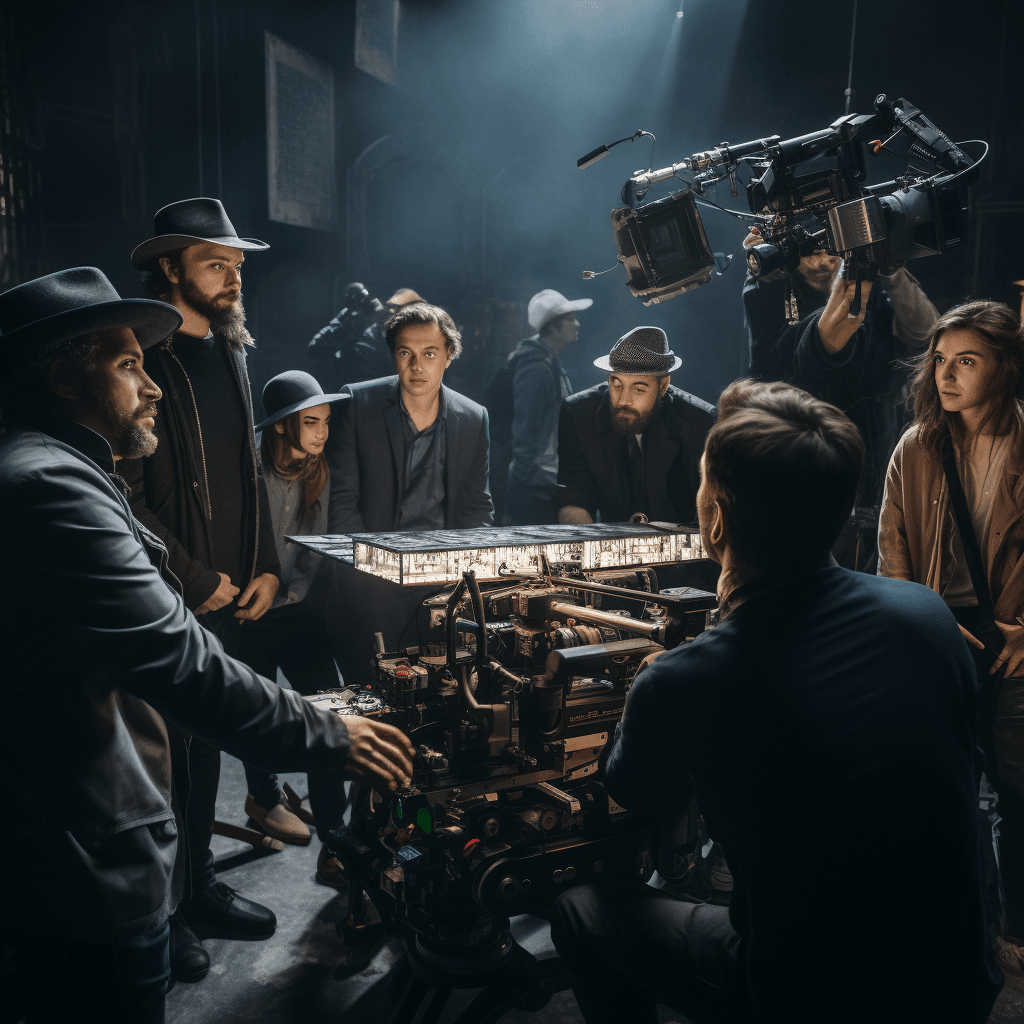What's After the Blog?
History • Directors
The Art of Suspense in Alfred Hitchcock's Films
Delve into the mastery of Alfred Hitchcock, exploring his unique art of creating suspense in film through innovative techniques, memorable characters, and psychological depth.
August 15, 2024

Movies mentioned in this article
The Art of Suspense in Alfred Hitchcock’s Films
Introduction
Alfred Hitchcock, renowned as the ‘Master of Suspense’, has captivated audiences for decades with his unique cinematic style. His films are not just mere thrillers; they are intricate puzzles that weave tension and anticipation into every frame. Hitchcock’s mastery lies in his ability to hold the audience in a state of constant suspense, making them active participants in the unfolding drama. From the dizzying heights of Vertigo to the chilling corridors of Psycho, his films transcend typical thriller conventions, turning ordinary scenarios into extraordinary spectacles of suspense and intrigue. This blog post aims to delve into the techniques and elements that Hitchcock used to create this spellbinding effect. Just as ATM (What’s After the Movie) offers insights into the nuances of movies, we will explore the depths of Hitchcock’s artistry, uncovering the secrets behind his enduring legacy in the world of suspenseful filmmaking.
Hitchcock’s Signature Techniques
Alfred Hitchcock’s filmmaking style is a tapestry of innovative techniques that have set a benchmark in the art of creating suspense. One of his most notable methods is the use of camera angles to evoke a sense of unease and anticipation. In Rear Window, Hitchcock masterfully utilizes perspective to immerse the audience in the voyeuristic tension experienced by the protagonist. The camera becomes an extension of the character’s gaze, making viewers complicit in the act of spying on the neighbors, thereby heightening the suspense.
Lighting and sound are other tools Hitchcock used with exceptional skill. His use of shadows and light in Psycho creates an atmosphere brimming with suspense, most notably in the iconic shower scene. The sharp contrast between light and dark, combined with the piercing sound of the strings in Bernard Herrmann’s score, creates a moment of intense horror that has been etched into the annals of cinematic history.
Hitchcock also excelled in the strategic use of information, often employing a technique he referred to as the “bomb theory.” This involved giving the audience more information than the characters in the film, as seen in Sabotage. By revealing the presence of a bomb to the audience but keeping the characters oblivious, Hitchcock creates a ticking time bomb of tension, with viewers eagerly anticipating the characters’ reactions when they discover the truth.
Furthermore, Hitchcock’s use of pacing and timing in narratives is nothing short of masterful. Films like North by Northwest demonstrate his ability to balance action with quieter moments, allowing the tension to ebb and flow while keeping the audience engaged. This rhythm, intrinsic to Hitchcock’s storytelling, ensures that the suspense is not just a momentary thrill but a constant, underlying presence throughout the film.
In conclusion, Hitchcock’s signature techniques - his masterful use of camera angles, lighting, sound, and pacing - are not just elements of his unique style but are the very foundations upon which he built his legacy as the Master of Suspense. These methods have influenced countless filmmakers and continue to be a gold standard in the art of suspenseful storytelling.
The Role of the MacGuffin
A pivotal element in many of Hitchcock’s films is the use of a MacGuffin, a term popularized by him to describe an object or goal that drives the plot but is inconsequential in itself. The genius of the MacGuffin lies in its ability to engage the audience in a chase or a quest, while the real suspense is built around the characters and their interactions. In North by Northwest, the pursuit of a mysterious microfilm serves as the MacGuffin, propelling Cary Grant’s character into a whirlwind of espionage and danger. However, the microfilm itself is of little importance; it is merely a tool to weave a web of suspense. Similarly, in The 39 Steps, the details of the espionage plot are nebulous, but it’s the perilous journey of the protagonist, evading both the police and enemy agents, that keeps the audience on the edge of their seats.
Hitchcock’s use of the MacGuffin is a testament to his understanding of audience psychology. He knew that what drives a story is not always the end goal but the journey towards it. This is evident in Vertigo, where the mystery surrounding the character of Madeleine is a MacGuffin that leads to a deeper exploration of obsession and identity. It is the emotional entanglement of the characters, rather than the pursuit of the truth about Madeleine, that forms the crux of the film’s suspense.
Psychological Elements in Hitchcock’s Suspense
Another hallmark of Hitchcock’s style is the incorporation of psychological elements into his narratives, adding depth and complexity to the suspense. Hitchcock’s characters are often flawed, their inner turmoil and fears as gripping as the external dangers they face. In Psycho, Norman Bates is a character study in psychological horror. The suspense is not just in the shocking moments of violence, but in the gradual unveiling of Norman’s disturbed psyche. Similarly, in Rear Window, the tension is amplified by the protagonist’s helplessness due to his broken leg, turning his apartment into a prison from which he can only watch as the drama unfolds.
Hitchcock also masterfully uses symbolism and motifs to enhance the psychological tension. In Spellbound, the use of dream sequences, designed by Salvador Dalí, provides a surreal glimpse into the character’s subconscious, blurring the lines between reality and illusion. This not only adds to the visual spectacle but deepens the suspense by making the audience question what is real.
In Vertigo, the theme of obsession is explored not just through the narrative but also through visual motifs like the spiral, which symbolizes the protagonist’s downward spiral into madness. Hitchcock’s ability to intertwine psychological elements with suspenseful storytelling creates a more immersive and emotionally resonant experience for the audience, making his films enduring masterpieces of the thriller genre.
In these ways, Hitchcock’s films transcend traditional suspense, intertwining psychological depth with masterful storytelling to create a cinematic experience that is as intellectually stimulating as it is thrilling.
”Why Are Hitchcock’s Characters So Memorable?”
Alfred Hitchcock’s films are not just remembered for their suspenseful plots but also for their memorable characters, who often remain etched in the audience’s mind long after the film has ended. Hitchcock’s brilliance in character development lies in his ability to create figures that are both relatable and enigmatic, making the audience invest in their journeys. In Psycho, the character of Norman Bates is a prime example. Initially presented as a sympathetic, if somewhat awkward, motel owner, the gradual revelation of his darker nature is as shocking as it is compelling, turning him into one of cinema’s most unforgettable characters.
In The Birds, the character of Melanie Daniels, played by Tippi Hedren, starts as a glamorous socialite but evolves into a complex figure as she faces the inexplicable bird attacks. Her transformation under duress and the subtleties of her interactions with other characters add layers to the narrative, making her role integral to the film’s enduring impact.
Hitchcock’s characters often embody the themes of his films, serving as conduits for larger discussions about human nature and societal norms. In Rear Window, L.B. Jefferies’ voyeurism is not just a plot device but a commentary on the audience’s own penchant for observation and the ethical implications of it. This depth in character creation ensures that Hitchcock’s characters are not merely participants in a suspenseful plot but are representatives of complex human emotions and moral dilemmas.
Hitchcock’s Influence on Modern Cinema
The influence of Alfred Hitchcock’s techniques and storytelling style extends far beyond his own filmography, deeply impacting the evolution of the thriller genre and modern cinema as a whole. Contemporary filmmakers continue to draw inspiration from Hitchcock’s methods, whether it’s his mastery of visual storytelling, his ingenious use of suspense, or his psychological character studies.
Directors like David Fincher and Christopher Nolan have cited Hitchcock as a major influence. Fincher’s Se7en and Gone Girl exhibit Hitchcockian traits in their use of suspense and psychological complexity. Nolan’s Memento and Inception, while vastly different in plot from Hitchcock’s works, borrow from his ability to engage audiences on an intellectual level, challenging them to unravel the narrative’s complexities.
Moreover, Hitchcock’s influence extends to television, with shows like Breaking Bad and Bates Motel, the latter being a direct homage to Psycho. These modern adaptations and interpretations of Hitchcock’s style demonstrate the timelessness of his techniques and the universal appeal of his storytelling approach.
In understanding Hitchcock’s enduring legacy, it becomes clear that his contributions to cinema go beyond the boundaries of his own films. He revolutionized the art of suspenseful storytelling, leaving an indelible mark on the world of filmmaking that continues to inspire and influence storytellers and audiences alike.
Exploring Themes and Motifs in Hitchcock’s Films
Alfred Hitchcock’s films are renowned not just for their suspenseful moments but also for the recurring themes and motifs that add layers of complexity to his stories. One of the most prominent themes in his work is the concept of the ‘wrong man’ – innocent individuals caught in a web of circumstances beyond their control. Films like North by Northwest and The Wrong Man depict this theme vividly, placing ordinary characters in extraordinary situations, thereby amplifying the tension and engaging the audience’s empathy.
Another recurring motif in Hitchcock’s films is the use of iconic landmarks as backdrops for key scenes. The Mount Rushmore sequence in North by Northwest or the Golden Gate Bridge in Vertigo are not just visually stunning but also symbolize the grandeur and scale of the characters’ predicaments. These landmarks become more than mere settings; they are integral to the narrative, enhancing the suspense and drama.
Hitchcock’s fascination with duality and mistaken identity is another theme that pervades his work. In Vertigo, the duality of the female lead, played by Kim Novak, creates a complex narrative that delves into obsession and identity. This theme is further explored in Strangers on a Train, where the lives of two strangers become intertwined through a deadly pact, each reflecting the darker aspects of the other.
Conclusion
Alfred Hitchcock, the undisputed Master of Suspense, has left an indelible mark on the world of cinema. His films, characterized by innovative storytelling, memorable characters, and psychological depth, continue to captivate and intrigue audiences decades after their release. Hitchcock’s mastery in building suspense, his pioneering use of cinematic techniques, and his exploration of human psychology have not only defined the thriller genre but have also influenced countless filmmakers and storytellers across generations.
As we reflect on the genius of Hitchcock, it is clear that his legacy extends beyond the confines of his filmography. His unique vision and approach to filmmaking have set a standard for what suspense in cinema can achieve – a blend of tension, anticipation, and intellectual engagement. For enthusiasts exploring the world of cinema through platforms like ATM (What’s After the Movie), Hitchcock’s films offer a rich tapestry of artistry and innovation, revealing the endless possibilities of storytelling in film.
Discover More on What’s After the Movie
Thank you for joining us on this exploration of Alfred Hitchcock’s art of suspense. We invite you to delve deeper into the world of cinema with more posts on the What’s After the Movie Blog. From in-depth analyses of classic films to insights into contemporary cinema, our blog offers a treasure trove of information for movie lovers and aficionados alike. Join us in unraveling the mysteries and magic of the movies.
Continue reading

What's After the Movie?
Not sure whether to stay after the credits? Find out!
Check out our other apps:
Actors
Companies
Latest Movies
© 2025 What's After the Movie. All rights reserved.



















